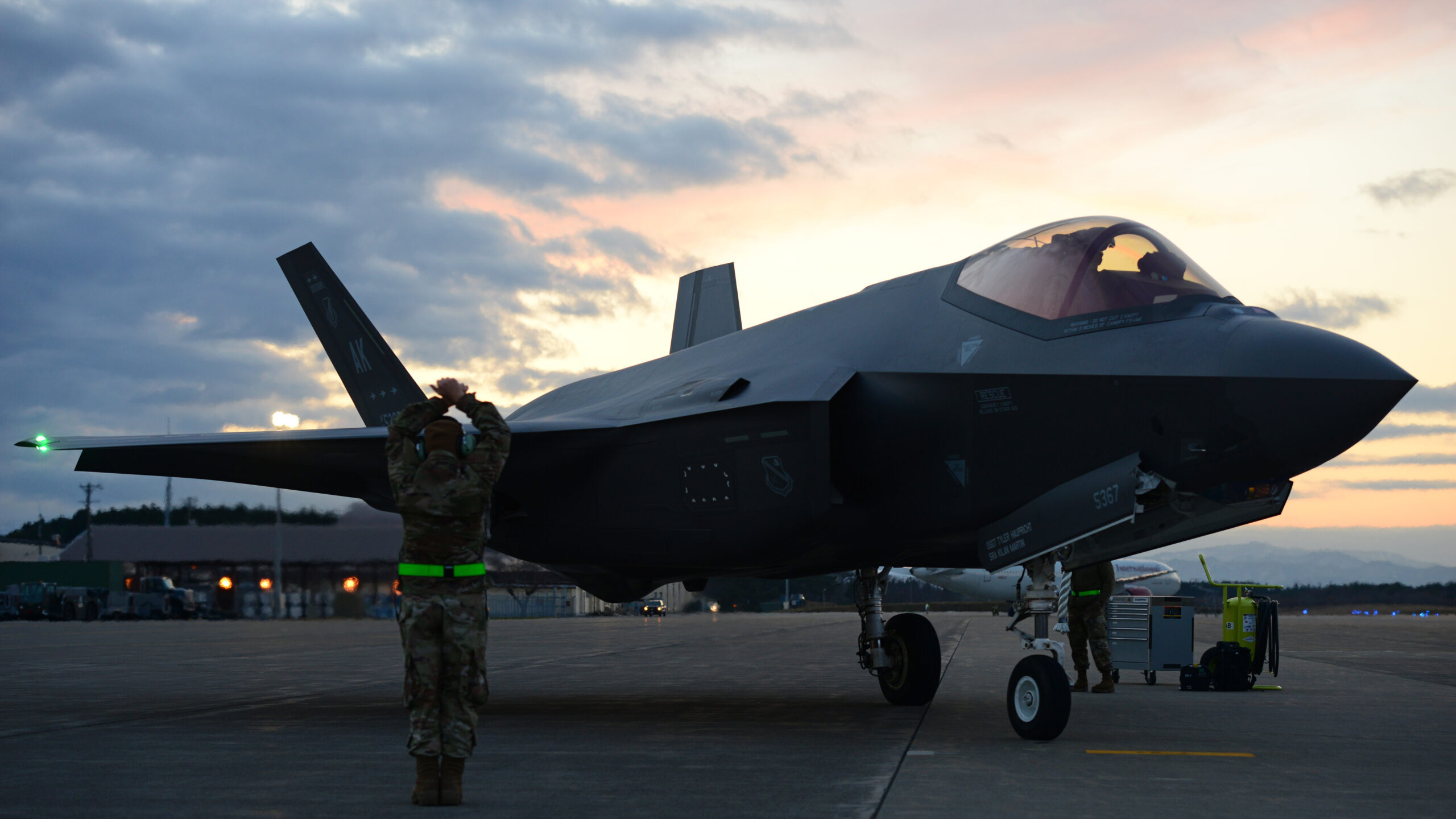
A US Air Force F-35A from the 356th Expeditionary Fighter Squadron, 354th Air Expeditionary Wing is parked on the flight line at Misawa Air Base, Japan, Dec 6, 2021, in support of Operation Iron Dagger. (US Air Force/Staff Sgt. Sean Martin)
WASHINGTON: Lockheed Martin delivered three more F-35s than planned in 2021, handing over a total of 142 Joint Strike Fighters to US and international customers as the company continues to rebound from the coronavirus pandemic.
The company was able to exceed its goal of 139 F-35s for 2021 due to the “efforts and dedication” of its suppliers and workforce “combined with the efficiencies of digital engineering,” Bridget Lauderdale, Lockheed’s vice president of the F-35 program, said in a statement to Breaking Defense.
The three additional jets delivered in 2021 will count towards this year’s production goal, which remains at 151 to 153 jets, according to Lockheed spokesman Brett Ashworth.
The program meeting its delivery goal for 2021 is a good news story for Lockheed, which was forced to slow F-35 production in summer 2020 after COVID-19 upset the jet’s global supply chain.
The company had expected to ramp production from 134 jets in 2019 to 141 F-35s in 2020, but suppliers had troubles getting components and other materiel to Lockheed’s Fort Worth, Texas-based production line on schedule. The end result: Lockheed delivered only 120 aircraft that year, creating a production backlog that the company said won’t be resolved until 2025.
Last September, the Pentagon and Lockheed agreed on a production rebaseline plan that would allow the company to gradually ramp production back up, with the intent to reach a stable pace of 156 F-35s per year in 2023 and beyond.
During an earnings call in October, Lockheed executives applauded the new schedule but stated that pandemic-related supply chain disruptions continue to rattle its business — especially on the F-35 program. Specifically, acting chief financial officer John Mollard projected a $400 million decrease in F-35 production-related revenue from 2021 to 2022.
The F-35 is not Lockheed’s only aviation program facing significant headwinds due to the coronavirus. The company now expects that the first F-16 produced in Greenville, S.C., will roll off the line about a year late, as a supplier of a major subassembly has fallen behind schedule, Greg Ulmer, Lockheed’s head of aeronautics, told Breaking Defense in November.
“With COVID and other issues associated with the supply base impacted by COVID, that ramp is taking longer than we envisioned it would,” he said then.
In a ‘world first,’ DARPA project demonstrates AI dogfighting in real jet
“The potential for machine learning in aviation, whether military or civil, is enormous,” said Air Force Col. James Valpiani. “And these fundamental questions of how do we do it, how do we do it safely, how do we train them, are the questions that we are trying to get after.”


























